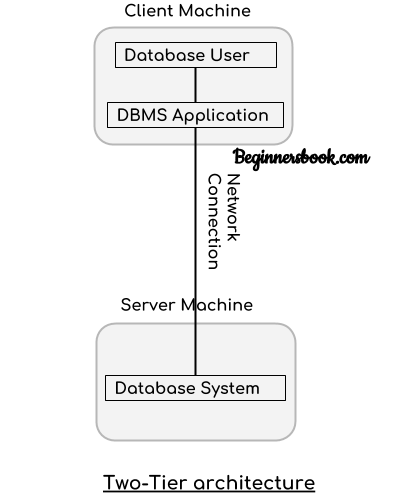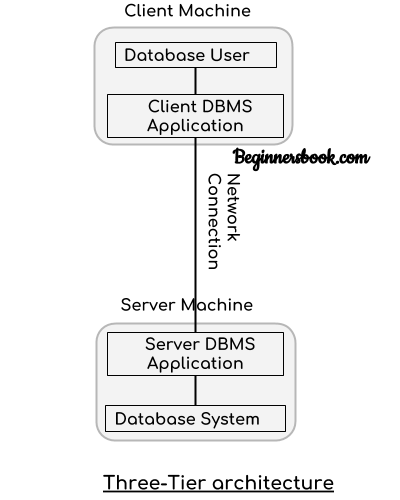In the previous tutorials, we learned basics of DBMS. In this guide, we will see the DBMS architecture. Database management systems architecture will help us understand the components of database system and the relation among them.
The architecture of DBMS depends on the computer system on which it runs. For example, in a client-server DBMS architecture, the database systems at server machine can run several requests made by client machine. We will understand this communication with the help of diagrams.
Types of DBMS Architecture
There are three types of DBMS architecture:
1. Single tier architecture
2. Two tier architecture
3. Three tier architecture
1. Single tier architecture
In this type of architecture, the database is readily available on the client machine, any request made by client doesn’t require a network connection to perform the action on the database.
For example, lets say you want to fetch the records of employee from the database and the database is available on your computer system, so the request to fetch employee details will be done by your computer and the records will be fetched from the database by your computer as well. This type of system is generally referred as local database system.
2. Two tier architecture

In two-tier architecture, the Database system is present at the server machine and the DBMS application is present at the client machine, these two machines are connected with each other through a reliable network as shown in the above diagram.
Whenever client machine makes a request to access the database present at server using a query language like sql, the server perform the request on the database and returns the result back to the client. The application connection interface such as JDBC, ODBC are used for the interaction between server and client.
3. Three tier architecture

In three-tier architecture, another layer is present between the client machine and server machine. In this architecture, the client application doesn’t communicate directly with the database systems present at the server machine, rather the client application communicates with server application and the server application internally communicates with the database system present at the server.
sam says
one of the most underrated website with the best explanation, no one in the world is as best as u are
Why not try to build a platform where others can compete with each other on the basis of their coding skills
OMONDI BENARD OPALA says
The tutorial is just fine and i appreciate very much for such a help.i was blank in DB but having read through your notes am convinced that the DBMS is very simple and not complicated as I thought before.Much appreciation for you guys.This is very great.
Sunanda says
very helpful! .we can understand the concepts very clearly just by reading those simple and effective explanations. Thank you so much:)
Mingso says
Wow! Great explanation ❤️